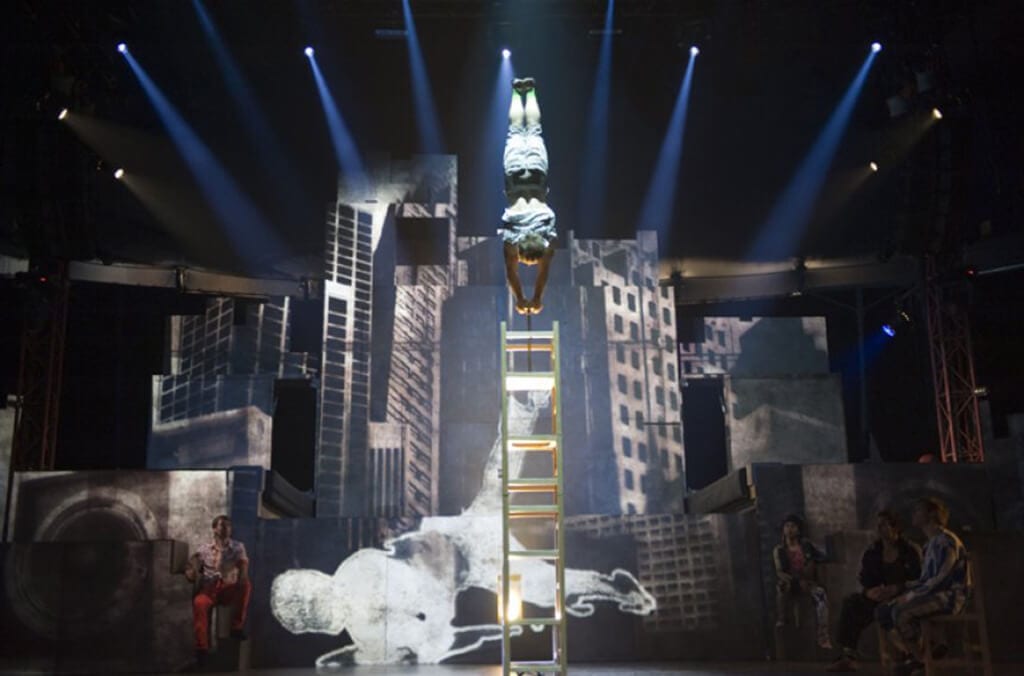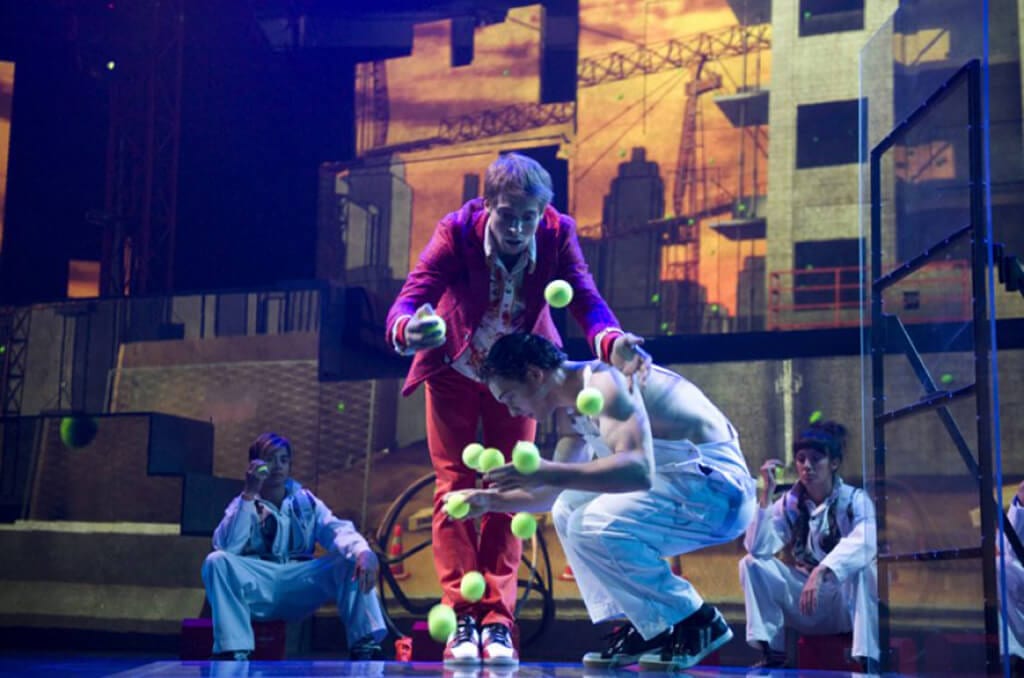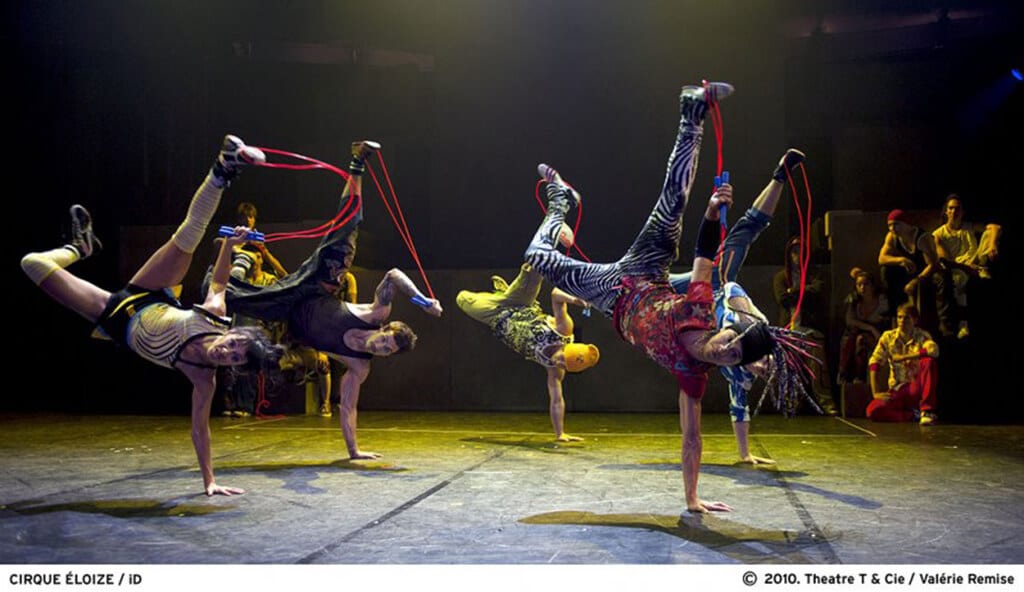With the worldwide change of attitudes towards the use of animals in performance contexts the world of the circus has undergone a transformation far more rapid and disruptive than is usually experienced by artistic genres. In the last forty years the pioneering work of Cirque du Soleil and other groups focused on Montreal has reshaped the forms and aesthetic inspiration of the circus to create something of a fusion between acrobatics and dance that has been of mutual benefit. Cirque Éloize (which means ‘heat-lightning’) comprises performers of a second generation who aim to take this work to fresh heights, and on the inspiring evidence of their touring show iD they are well on their way.
On one level the show provides two hours of superlative displays in traditional circus practice: hand-to-hand acrobatics, juggling, hanging straps, hand balancing, aerial hoop, cyr wheel, skipping rope and contortion. Collectively and individually the fifteen members of the company represent all the main disciplines with rare skill. However, even on the purely technical level there is a lot more on offer – in-line skating, urban dance, trampowall and trial bike acts are included that take one well away from the traditional milieu of the circus tent. These acts are not just gravity-defying, but full of grace, flair and symmetry that blur the boundaries between dance and sport and gymnastic display. All the acrobats can dance and the four specialist dancers can also perform acrobatically.
Beyond the local intensity and astonishment of individual performances there is a loose overarching story of urban alienation as well. At first there is an apparent conflict between two groups of youngsters, rather in the manner of the ‘Jets’ and the ‘Sharks’ from Westside Story. This is not sustained in a formal dramatic sense but it allows for plausible alternation between ensemble work and more intimate duets and solo items, which are intensified by the variety of video projections that form the design backdrop to the show. These are reminiscent of the startling work in this genre we saw in Golem last year: Robert Massicotte’s work draws on comic books and science fiction to provide a fully authentic set of urban visions that leaves the performers and dancers on an uncluttered stage while offering the weight and presence of a fully-built set. The whole is underwritten by music specially written for the performance that is heavy on electronic wizardry and percussion, but also embodying much more reticent and intimate piano-based sonorities.
The emotional register of the two halves is carefully controlled by creator/director Jeannot Painchaud. There are many high energy moments where the hip-hop routines are more dazzling than anything currently on offer elsewhere in town, including In the Heights. There are also quieter moments of subtle suppleness and romantic poise between two performers, whether dangling on silk scarves or supported by a single arm. Solo spots that stand out for both showiness and reticence at once included episodes of juggling, where it was almost as if the balls were yo-yos on strings, and gymnastics on top of eight interlocked chairs piled high into the flies.
Inevitably a choice of highlights is inherently subjective but there were certain episodes that combined grace, style and daring to an exceptional degree. For example, the way a trial bike could be made to dance and weave around an audience member lying prone on the floor was in the best tradition of circus ‘wow’ moments while also exceptionally beautiful; and the final eight minute sequence of the trampowall proved to be the most awesome segment of the evening. As the jumpers weaved in and around one another through the air and disappeared into holes in the set it was like watching a Busby Berkeley mass dance sequence or something choreographed by Mark Morris, in which distinctions of genre were blissfully abolished in the glory and wonder of the moment.



